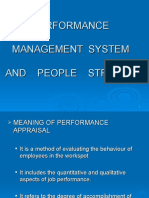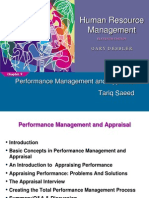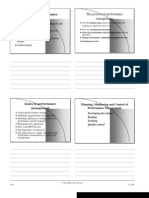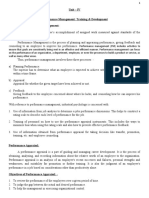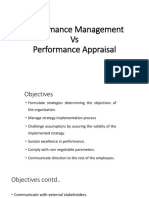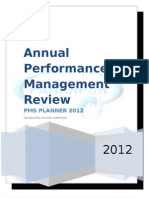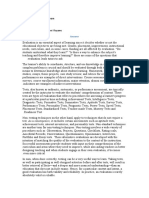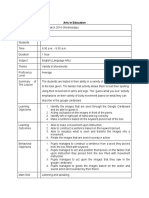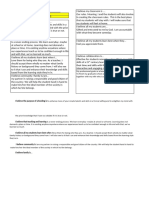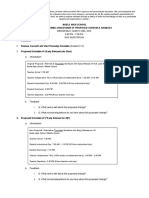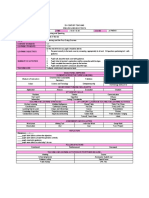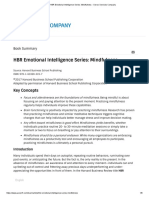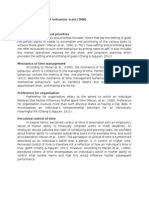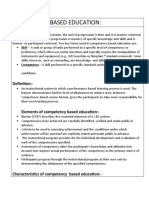0% found this document useful (0 votes)
66 views45 pagesPerformance MNGMT
The document discusses performance management and evaluation of salespeople. It provides:
1. An overview of performance management as a process to ensure employees are aligned with organizational goals and meeting performance targets through goal setting, feedback, rewards, and support.
2. Details on key aspects of performance management including methodology, objectives, behaviors, competencies, and tips for an effective performance management system and appraisal process.
3. Guidance on evaluating salespeople's performance, including the purpose and importance of performance appraisals, who should conduct them, when they should occur, and factors that influence salesperson motivation, behavior, and performance.
Uploaded by
jalajsaxena01Copyright
© Attribution Non-Commercial (BY-NC)
We take content rights seriously. If you suspect this is your content, claim it here.
Available Formats
Download as PPT, PDF, TXT or read online on Scribd
0% found this document useful (0 votes)
66 views45 pagesPerformance MNGMT
The document discusses performance management and evaluation of salespeople. It provides:
1. An overview of performance management as a process to ensure employees are aligned with organizational goals and meeting performance targets through goal setting, feedback, rewards, and support.
2. Details on key aspects of performance management including methodology, objectives, behaviors, competencies, and tips for an effective performance management system and appraisal process.
3. Guidance on evaluating salespeople's performance, including the purpose and importance of performance appraisals, who should conduct them, when they should occur, and factors that influence salesperson motivation, behavior, and performance.
Uploaded by
jalajsaxena01Copyright
© Attribution Non-Commercial (BY-NC)
We take content rights seriously. If you suspect this is your content, claim it here.
Available Formats
Download as PPT, PDF, TXT or read online on Scribd
/ 45















